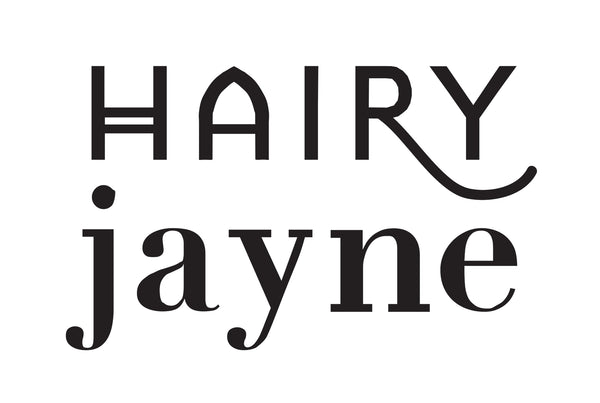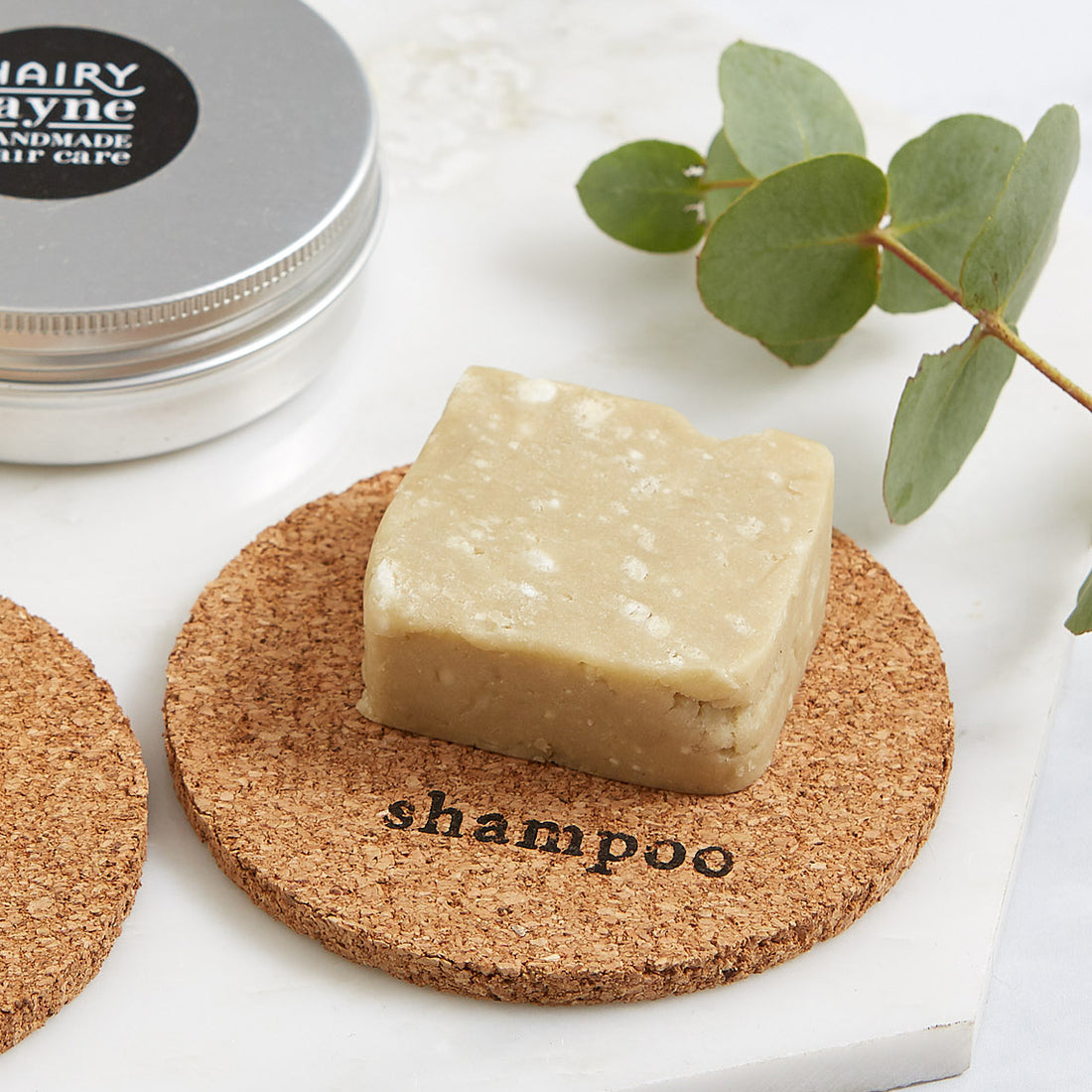
How to use a shampoo bar - tips from a hairdresser
Shampoo bars have become a popular choice for washing your hair for many good reasons. Small but mighty, are the most eco friendly option as their carbon footprint is generally much lighter than traditional water-based shampoos.
The plastic free packaging is a simple cardboard box, which makes shampoo bars the most ‘zero-waste’ hair care product around.
Have you ever wondered what a shampoo bar is and more importantly, how to use a shampoo bar?
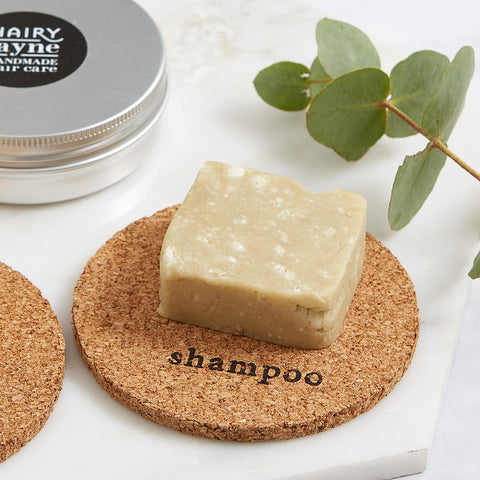
It can be difficult to know how to use one if you’re used to a more traditional liquid shampoo. If you’ve never used shampoo bars before, don’t worry.
As a hairdresser, I can assure you that shampoo bars are no longer like soap bars at all and are formulated with actual shampoo ingredients.
Hairy Jayne shampoo bars are essentially a concentrated solid version of our liquid shampoo. Just the addition of water once in-shower is required.
Thanks to the shampoo bars of yore, there is a fear that using a shampoo bar for the first time will leave hair too heavy, turn it waxy, require a cider vinegar rinse afterwards or need some sort of ‘transition’ phase.
But we’re in a new age of shampoo bars now. They’ve been formulated with much better ingredients and the correct pH level for the hair.
Convinced that you can ditch the plastic AND have lovely healthy hair? Keep reading for a full guide to how to use a shampoo bar, as written by a hairdresser.
Still figuring out what shampoo is right for your hair? Why not take a look at all of our natural shampoo.
How to use a shampoo bar
Using a shampoo bar is easy, simply following the steps below:
- Thoroughly wet your hair and the shampoo bar.
- You can use a shampoo bar two ways. Either rub the shampoo bar directly onto your scalp (as you would use a soap on your skin) or rub it between your palms to create a lather.
- Concentrate on distributing the lather all over your scalp. Use your fingertips to massage and guide the foam from your hairline to your crown and down to your neckline.
- Use your palms to work the product down from roots to tips with water to start rinsing it out.
- Rinse all of the product from your hair, shaking it with your fingertips, until it feels squeaky clean.
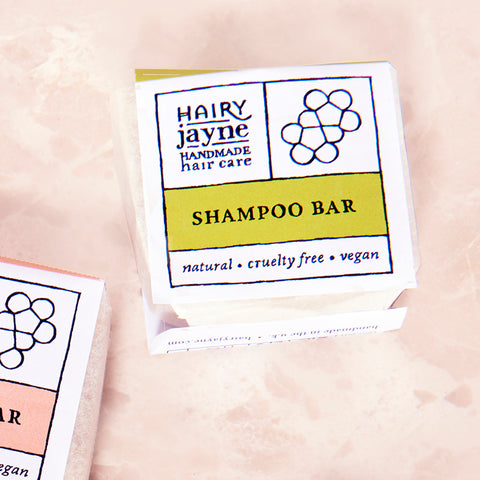
Another key factor is how you store your shampoo bar. Much like soap bars, if shampoo bars are left too wet in between uses, they can go a bit soggy underneath.
Keeping your shampoo bar well drained and in a place where water can’t get to it is key. Using a shampoo bar holder placed on a side ledge or shower shelf will ensure that it can air dry between uses.
How often to use a shampoo bar
How often you use your shampoo bar is dependent on your hair type and the oil production levels of your scalp.
Heads of finer hair tend to have more follicles, so oil production is slightly higher. For finer hair types we recommend using a shampoo bar every other day.
For scalps that don’t tend to get very greasy, we’d recommend 1-2 times per week. Hairy Jayne shampoo bars have added aloe vera in to help to regulate scalp oil production.
For sensitive scalps, we don’t recommend using a shampoo bar daily. Although our shampoo bars are mild and sulphate free, removing the scalp’s natural oils on a daily basis can actually aggravate a sensitive scalp further.

Daily shampooing can also lead to overstimulation of the hair follicles and overproduction of its natural oil.
If the scalp’s oil is removed too often, the scalp will overcompensate and produce even more oil, creating a vicious cycle of excess washing to combat the excess oil.
The key to looking after your scalp is a gently-gently approach of washing with a mild shampoo, preferably sulphate free with oil-regulating ingredients, in a routine that’s built around how often your hair feels excessively greasy.
If you usually wash your hair daily because it feels excessively greasy every day, try to go for a longer period of time between washes for a fortnight to help ‘reset’ your scalp. This will help get your scalp back to a more natural rhythm of oil production.
When you start to use a shampoo bar there won’t be a ‘transition’ phase if the liquid shampoo you have been using and the solid shampoo bar that you’re switching to are both sulphate free.
Both will be equally as mild on the scalp, so your usual shampooing frequency or routine can be easily carried over.
Using a shampoo bar for different hair types
Struggling to find the right bar for your hair type? Luckily, our shampoo bars aren’t specifically targeted towards different hair types.Hairy Jayne shampoo bars are designed to use with all types of hair. Our whole hair care range is designed so that our shampoos (both solid and liquid) work well for all hair types – whether fine, thick, short, long, curly, dry or oily.
Whereas our conditioners are designed to cater for various types of hair and their needs. There are three conditioners – Light, Cream and Treatment – and all have different strengths to offer different hair types.
Not only are Hairy Jayne shampoo bars made to suit all hair types, they’re great for coloured hair, too. Because they are pH balanced and sulphate free, they are mild, gentle cleansers that don’t strip the hair of colour or natural oils.
Avoiding common mistakes when using a shampoo bar
When switching to a shampoo bar, firstly make sure it’s not a soap-based shampoo bar. Shampoo bars that are made the same way as soap (but just called shampoo bars) will leave greasy, waxy residue in the hair that is like soap scum in the shower.
Non-soap shampoo bars are called sydnet bars and are made from shampoo ingredients (sydnet is short for synthetic detergent) and are pH balanced to suit the scalp.
Next, make sure you’re using the correct amount of product. Shampoo bars are super concentrated shampoo ingredients, so a little goes a long way.
A couple of rubs of shampoo bar in the hairline is usually enough to get a good lather going. Then work on distributing the lather all over the head, as described earlier.
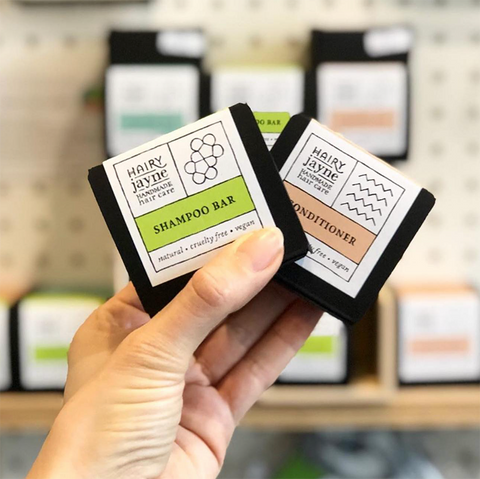
If you find that you’re not getting the ’squeaky clean’ feeling that you’re used to, try the double shampooing method the next time you shampoo. Do a second shampoo (directly after the first one) with less product than the first one.
Less shampoo is required because the second shampoo will really lather up, much more easily.
The first shampoo will lift excess oil and dirt, but if your hair has any extra build up, possibly from pollution or styling products, it will need another light shampoo to really shift it. The beauty of a double shampoo means that your hair will actually stay clean for a bit longer.
The final thing to be wary of is rinsing well. After using a shampoo bar, if the product isn’t fully rinsed from your hair, it will appear dull and possibly even ‘coated’.
If you find this to be a problem try rinsing for longer than usual and make sure you’re lifting and shaking your hair at the roots as you rinse.
How to use a shampoo bar - the conclusion
Shampoo bars aren’t just about great eco credentials, they’re great for your hair and scalp, too!Switching to a shampoo bar should be a smooth and enjoyable transition, resulting in healthy hair that’s easy to manage. If you have any queries about how to use a shampoo bar, please feel free to get in touch.
If you want to find out more about shampoo bars, check out our ultimate shampoo bar guide.
For more hair care tips, follow us on Instagram. And stay in the loop by signing up to our emails.
